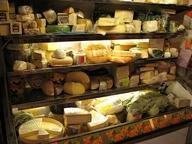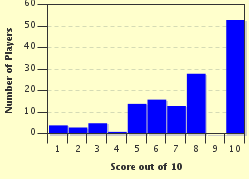Quiz Answer Key and Fun Facts
1. An unpasteurized sheep's milk blue cheese produced in Combalaou Caves. Once used as a "cure" for gangrene.
2. A cheese from France with a nutty flavor. The region the cheese comes from and the dairy cattle used share name of the cheese.
3. A wet, Greek cheese made from sheep or goat milk. The cheese's name means slice when translated to English.
4. A creamy, white Latin American cheese made from cow's milk. Softens but does not melt when heated.
5. An Indian and Pakistani cheese made with hot milk and vinegar or other acids. Also called Chhana
6. A hard, well-aged cow's milk cheese named after a town in Somerset, England. Can be yellow, white or "red"
7. Despite its name, this cheese has an American origin; it is a soft, cow's milk cheese whose flavor can vary greatly.
8. A semi-hard cheese from a town in the South Holland province of the Netherlands. Locally, it is a style of cheese and not a specific one.
9. A crumbly and salty blue cheese from a town in Lombardy, Italy. It is about 30% fat.
10. A semi-soft cheese from the Aosta Valley. It is said this cheese tastes best in the summer when the dairy cows are fed only grass.
Source: Author
Joepetz
This quiz was reviewed by FunTrivia editor
WesleyCrusher before going online.
Any errors found in FunTrivia content are routinely corrected through our feedback system.


